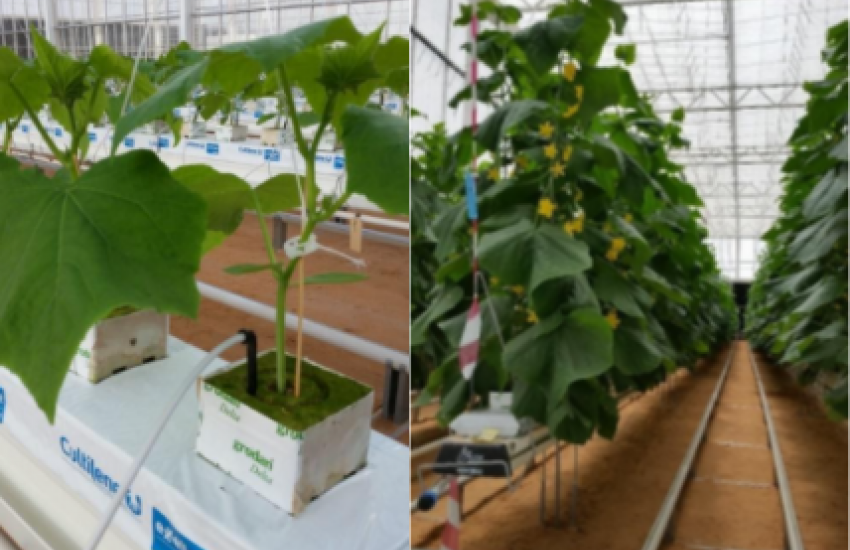Image

Background
In a greenhouse, a favorable climate is realized in order to have sunlight converted to fresh vegetable crops. In general, the more light a crop receives, the more product can be grown. Then, additional light will hardly lead to additional production and the detrimental effects of Estidamah 2 of 33 a higher light entrance become dominant. Detrimental effects of high light transmissivity are too high temperatures and/or a high water demand for cooling.
Experimental History
- Seed Sowing: 8 March 2017
- Transplanting: 26 March 2017
- First Harvest: 10 April 2017
- Harvesting Period: 10 April – 9 July (13 weeks)
- Number of Harvests: 37
Goals
This project aims at finding the trade-off between using an insulating polycarbonate cover
that reduces the heat and light entrance and a highly transparent glass greenhouse.
The main factors studied are:
- Two greenhouse types: a glass and a multi-wall polycarbonate covered greenhouse the glass greenhouse has an average transmissivity of 60% and the multi-wall polycarbonate greenhouse has a 35% average transmissivity
- Two cucumber varieties: Khassib and Alfrid (Rijk Zwaan)
- Two stem densities: 3.75 stems/m² (low density) and 5 stems/m² (high density)
Result overview
Low light transmitting greenhouse gave a 37% lower cucumber production than the high light transmitting glass greenhouse
| Polycarbonate Greenhouse | Production (kg/m²) | St. deviation (4 plots) |
|---|---|---|
| Khassib low stem density | 9.47 | 0.88 |
| Khassib high stem density | 10.22 | 0.59 |
| Alfrid low stem density | 8.66 | 0.82 |
| Alfrid high stem density | 8.49 | 0.54 |
| Polycarbonate Greenhouse | Production (kg/m²) | St. deviation (4 plots) |
|---|---|---|
| Khassib low stem density | 14.50 | 0.63 |
| Khassib high stem density | 16.12 | 1.15 |
| Alfrid low stem density | 13.26 | 0.96 |
| Alfrid high stem density | 14.59 | 0.87 |
Low light transmitting greenhouse used 9% less water for cooling, but as the production dropped more than the water consumption, the water use efficiency of the low light transmitting greenhouse is less than the highly transparent glass greenhouse.
| From 8 April Till 9 July | ||
|---|---|---|
| Clear Glass Greenhouse | Polycarbonate Greenhouse | |
| Irrigation | 321 | 256 |
| Drain | 78 | 58 |
| Irri-drain | 243 | 198 |
| Cooling | 476 | 458 |
| Net water use | 719 l/m² | 656 l/m² |
| Yield | 14.6 kg/m² | 9.2 kg/m² |
| WUE | 49 l/kg | 72 l/kg |
Recommendation
- As long as the temperature can be well controlled (which is the case in the dry arid climate conditions in the Riyadh-region) high light levels are no problem for cucumber
- The variety Khassib gives a higher production than the variety Alfrid
- Therefore, ensuring a high light transmissivity of the greenhouse (60%) gives a better water use efficiency than using an insulating low transmission greenhouse (35%)